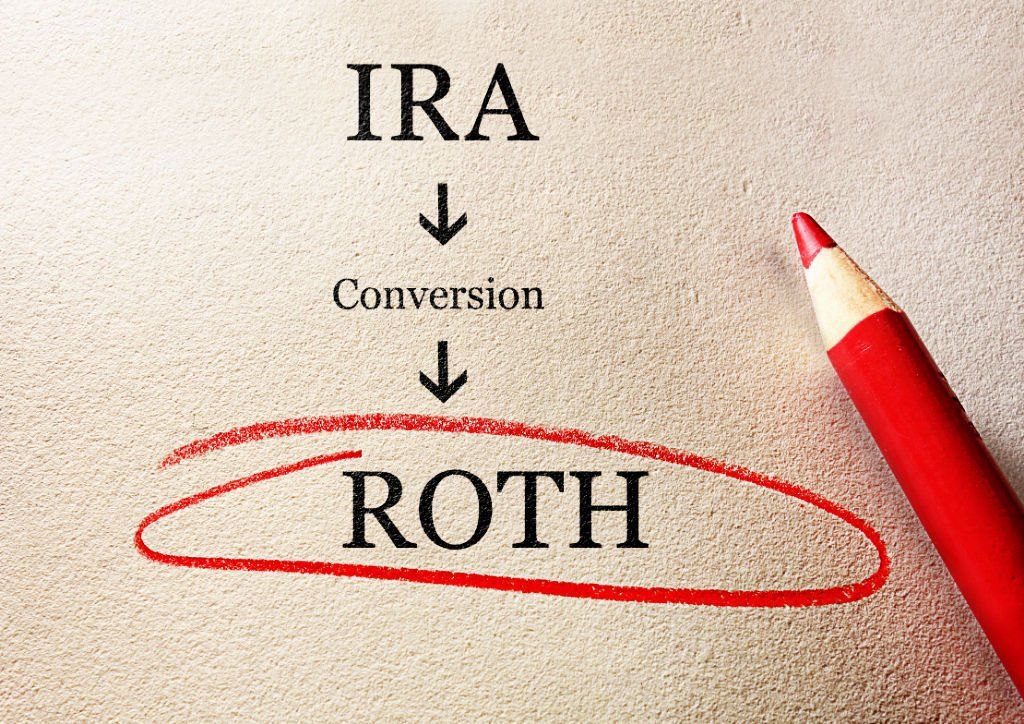Articles and Emails
Sign up for our FREE emails and receive articles, downloads, and masterclasses to help you make the most of your retirement.
Email Signup
Recent Articles

Sally’s Story Sally is 63, single, still working, and preparing for retirement. She holds several accounts: · $200,000 in a taxable account · $450,000 in a traditional IRA · $10,000 in a Roth IRA · $58,000 in an inherited Roth IRA · $300,000 in an inherited traditional IRA Her goal: purchase a $350,000 home in 2025 , paid in full—no mortgage, no debt. But she also wanted to retire early, preserve assets for her heirs, and maintain a long-term care reserve. This meant we had to evaluate which accounts to draw from (and when and how much) to fund the home without jeopardizing her broader financial plan. The Key Insight: Present vs. Future Tax Rates To make the right call, we needed a detailed financial plan and timeline to compare Sally’s current tax rate with her future retirement tax rate . That comparison would guide every decision regarding withdrawals. We took a conservative approach, aiming for: · A high probability of retirement success · An optimized legacy for her heirs · Two-year reserves for potential long-term care expenses at the end-of life Here’s a visual overview of Sally’s projected income sources over time:

Building and maintaining an optimized portfolio can save or make a retiree tens or hundreds of thousands of dollars over a long retirement. Here is a framework for helping you construct an optimized retirement portfolio. The academic research from the last several decades would suggest seven major building blocks aimed at balancing liquidity, income, growth, and safety over a 20 to 30-year period. Liquidity--Retirement assets are not being locked up or annuitized such that capital is not available for emergencies. Income—Using an optimized withdrawal rate, an increasing income is produced to combat inflation (unlike many pensions, bank and insurance strategies that are not inflation-adjusted). Growth--assets that can combat inflation over a 20 to 30-year period, giving the retiree more income and upside potential under normal and good economic times. Safety--manages the myriad of investment risks like market risk, inflation risk, and credit risk. Under worst-case scenarios, if withdrawal amounts are adjusted by using guardrails, the portfolio can still provide a lifetime income. Here is an executive summary of how to build up a portfolio for retirement in seven steps. 1. Values clarification and goal-setting . Figure out the income objective and capability of your retirement assets in lifestyle terms, then financial terms. In other words, set realistic, specific, financial goals based on your core life values. 2. Asset allocation glide path . Figure out how to diversify your retirement assets among stocks, bonds, and cash, based on your age, risk tolerance, retirement goals, and changing market values. 3. Valuation-dependent efficient frontier . Figure out which areas of the markets are historically inexpensive, and which are historically expensive. Don’t take on more volatility than you need to for the growth you need or desire. 4. Multi-asset class approach . Diversify one more step for more growth and less volatility. Put more money in the specific market areas that are less expensive and less money in the specific market areas that are more expensive. 5. Tax-aware asset location and distribution . Save as much on taxes as possible by figuring out which type of investments should be held in which types of accounts. If you are drawing an income from your assets, figure out the least-costly order for making withdrawals. 6. Investment selection based on account type (qualified, nonqualified) and asset-class propensity and magnitude of outperformance (passive, factor, managed, etc. ). Figure out what kind of investment to use (index mutual fund, factor mutual fund, actively managed mutual fund, single factor ETF, multifactor ETF, passive ETF, individual stocks, individual bonds, Unit Investment Trust, closed-end fund, etc.) based on the account type, asset class, and growth and income needs. 7. Rules-guided rebalancing based on retirement glide path and multi-asset-class approach . Readjust the investment mix based on your changing personal situation and changing market values. Sign up to receive my free monthly email articles...because you want to make the most out of your retirement . Here is a summary of the details backing this approach. Also, click here for more background information regarding my investment philosophy. 1. Values clarification and goal-setting Investment planning for (or in) retirement starts with retirement planning. You start with thinking about your life goals...your dreams...your ideal life in retirement. It could involve doing no work, working part-time, or doing seasonal work. Your ideal life could be going back to school, spending more time with family, traveling, ministry, etc. Ask yourself questions like, "What would I want to do if I didn't need to work for money?" or "What are the most important dangers, opportunities, and strengths I need to address?" or “Ten years from now, if I am looking back on a successful ten years, what will I have achieved?” This conversation allows you to create specific goals around your most cherished values. And your goals will be unique to you. You then design an investment plan to help you live your ideal life. This kind of goal-focused, plan-driven approach minimizes the chances of making bad investment choices based on current events and emotions. Instead, you can choose and maintain the specific mix of investments that can best deliver the results you need--using a disciplined, research-driven approach. 2. Asset allocation glide path The next major question is what kind of investments do you need to meet your goals. All investments have risk. Even "safe" investments over long periods have inflation risk. No single investment delivers growth, high income, and safety of principal. The key is designing a portfolio that balances them in a way that supports your retirement objectives. And this mix may change over time. For example, for most people, it makes sense to gradually decrease their exposure to high-growth, high-volatility assets like stocks (i.e., equities) as they approach retirement. In retirement, it is usually best to maintain a flat equity glide path, dynamically adjusted for valuation. This approach protects you from the retirement-danger-zone risks of portfolio size effect and sequence risk, while allowing you to take advantage of bear markets and market corrections. See How to Navigate the Retirement Danger Zone .

Protecting your lifetime retirement savings from excessive taxes is a crucial part of holistic financial planning. This involves protecting your IRA, 401k, lump sum pension rollover, Social Security, and any other type of retirement account or income stream from crushing tax rates. So let's be sure to differentiate tax preparation from tax planning . Tax preparation , also called tax return preparation, looks backward, one year at a time, to get the numbers right to accurately calculate your tax liability (and how much you owe or overpaid). Tax planning on the other hand looks at taxes in the context of your overall financial picture. A tax planner not only looks in the rear-view mirror but will look forward 20 to 30 years at your projected tax liability and ask what can be done to lower your lifetime tax bill.

If you have savings outside of pretax retirement accounts invested in capital assets (like stocks, bonds, ETFs, mutual funds, precious metals, jewelry, and real estate) which have large unrealized capital gains, this article is for you. You may be missing the opportunity to pay zero taxes NOW instead of 15% or higher rates in the future. Sign up to receive my free monthly email articles on retirement planning--no cost, no obligation .

Originally written on Aug 2, 2018 and updated for tax law changes. If you are no longer working and have reached the age of 72, you probably know about Uncle Sam’s rule for you to take a Required Minimum Distribution (RMD) from your traditional and rollover IRA(s) each year for the rest of your life. You can always withdraw more, but this requirement is the minimum you must take or be severely penalized. Fortunately, this rule does not apply to Roth IRAs. (The SECURE Act of 2019 changed the starting RMD age from 70½ to 72 starting in 2020, but fortunately you can still make a Qualified Charitable Distribution (QCD) starting the year you turn 70½.) Sign up to receive other helpful email articles on retirement planning--free of charge . If you have delayed paying taxes in your pretax IRA, 401(k), or 403(b), etc, there comes a time when the IRS wants their taxes. And if you don’t give them their taxes based on their required withdrawal schedule, you'll get hit with a 50% penalty on top of what you owed. Along with Social Security and other retirement income, this RMD can significantly raise your tax rate. Also read How to Dodge the Social Security Tax Torpedo . There are not many ways to reduce this tax burden. In the past, retirees have used various deductions including charitable cash contributions and gifting of highly appreciated assets to charities. (The latter not only gives you, the donor, a deduction but also avoids a long-term capital gains tax bill.) However, with the passing of the Tax Cuts and Jobs Act of 2017 (TCJA) , with its almost doubling of the standard deduction, itemizing deductions won’t make sense for near as many retirees. Ah, but there is still a strategy. But first let’s better understand the RMD.

The latest book I am reading is “ The Psychology of Money ” by Morgan Housel. Chapter 3 is entitled “Never Enough”. In this chapter, Housel talks about when rich people do crazy things. He tells stories of wealthy people who never had a sense of enough and wrecked their reputations, families, freedom, and happiness because of it. I have also talked to older couples who tell me they once had a much better retirement in view, but the quest for more led them to make unwise investment decisions that left them financially crippled in retirement. The importance of knowing when you have enough is not only vital to when you retire but also how you retire. It can affect how you invest, how you withdraw, and your overall satisfaction before and during retirement. Be sure to read to the end where I summarize a few key takeaways. Housel makes the four following observations in chapter 3 of his book. Sign up to receive my free monthly email articles on retirement planning--no cost, no obligation .

Whether you do mini-Roth conversions over several years or big Roth conversions in a few strategic years, the Roth conversion strategy could save you tens if not hundreds of thousands of dollars over your retirement. This article will get deep into the issues of Roth conversions for retirees and the ten steps to take to be sure it is done properly. Be sure to scan or read to the end where I will give you the simple answer to getting your Roth conversion questions answered. Sign up to receive my free monthly email articles on retirement planning--no cost, no obligation .

Making big financial decisions immediately following the death of a close family member can be dangerous. It is often best to allow some time before tackling big financial decisions. On the other hand, some people find getting immersed in the finances is helpful in coping with the loss. Whatever way is best for you, you will need to give it your careful attention to avoid big financial mistakes. The different types of accounts have different rules. I'll address the most common types. In the case of the death of a parent or anyone other than your spouse in which you are a non-spouse beneficiary, there are many rules that you must know to make the best decision for you and your family. (In this article, I use the common parent-child inheritance, but the planning strategies can apply to other non-spouse situations.) Your decisions can have major tax and investment consequences, both now and in the future. And some of these decisions have time deadlines keyed to your parent’s date of death. Also, some of these decisions are irreversible. You can download my free Estate Planning Survivor Checklist here . So, you don’t want to rush in and make decisions without knowing the rules, and you don’t want to wait too long and be stuck with fewer options. (In this article, I am not addressing estate taxes. As of 2021, only estates valued at $11.70 million or more are subject to federal estate tax. But there are plenty of other tax pitfalls to navigate around. I am also going to focus on liquid savings like investment and retirement accounts, versus real estate which will be for another time.) Sign up to receive my free monthly email articles on retirement planning--no cost, no obligation .

Delaying Social Security makes a lot of sense for many retirees; but there are common pitfalls that can cost you a bundle. As you know, the longer you delay your Social Security Retirement benefit, the higher your lifetime monthly payments are figured to be. This increase in delaying continues until age 70, after which there are no further increases for delaying. This increase for each month that you delay filing is not small, especially considering the current low interest rates. Even after full Social Security age, your payment goes up by 8% per year until age 70. Sign up to receive my free monthly email articles on retirement planning--no cost, no obligation . Here are the five big mistakes of delaying your Social Security retirement benefit.

